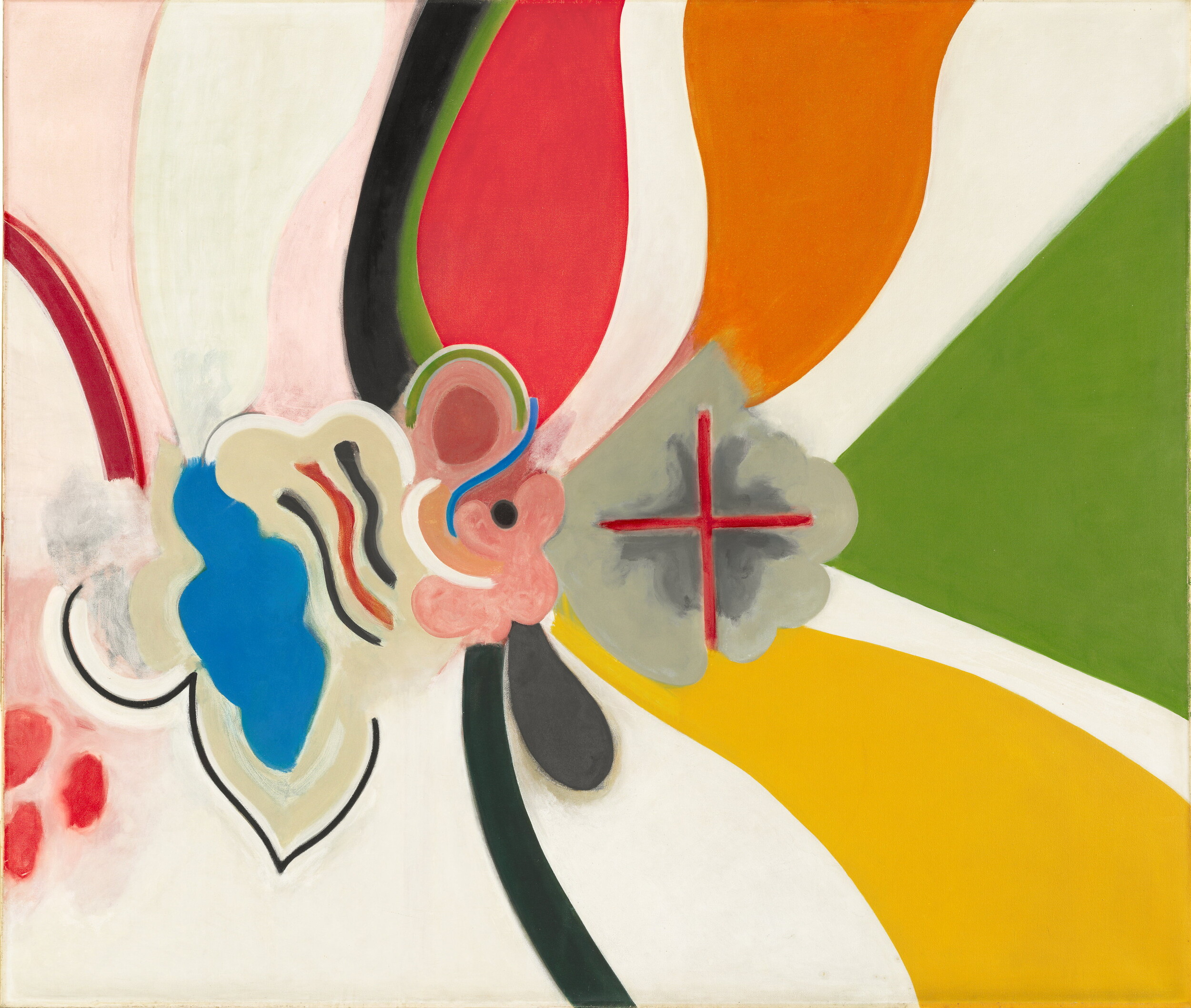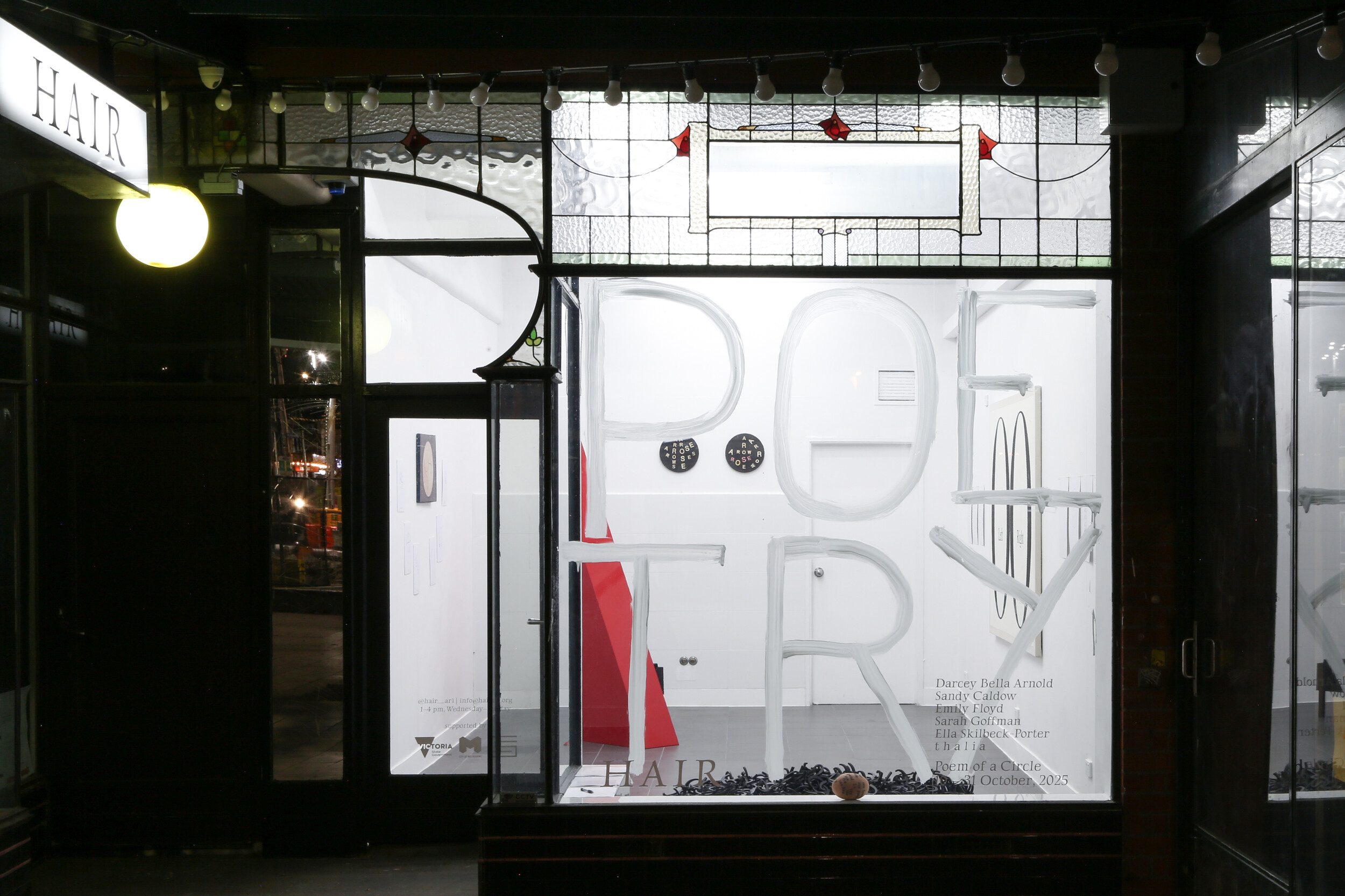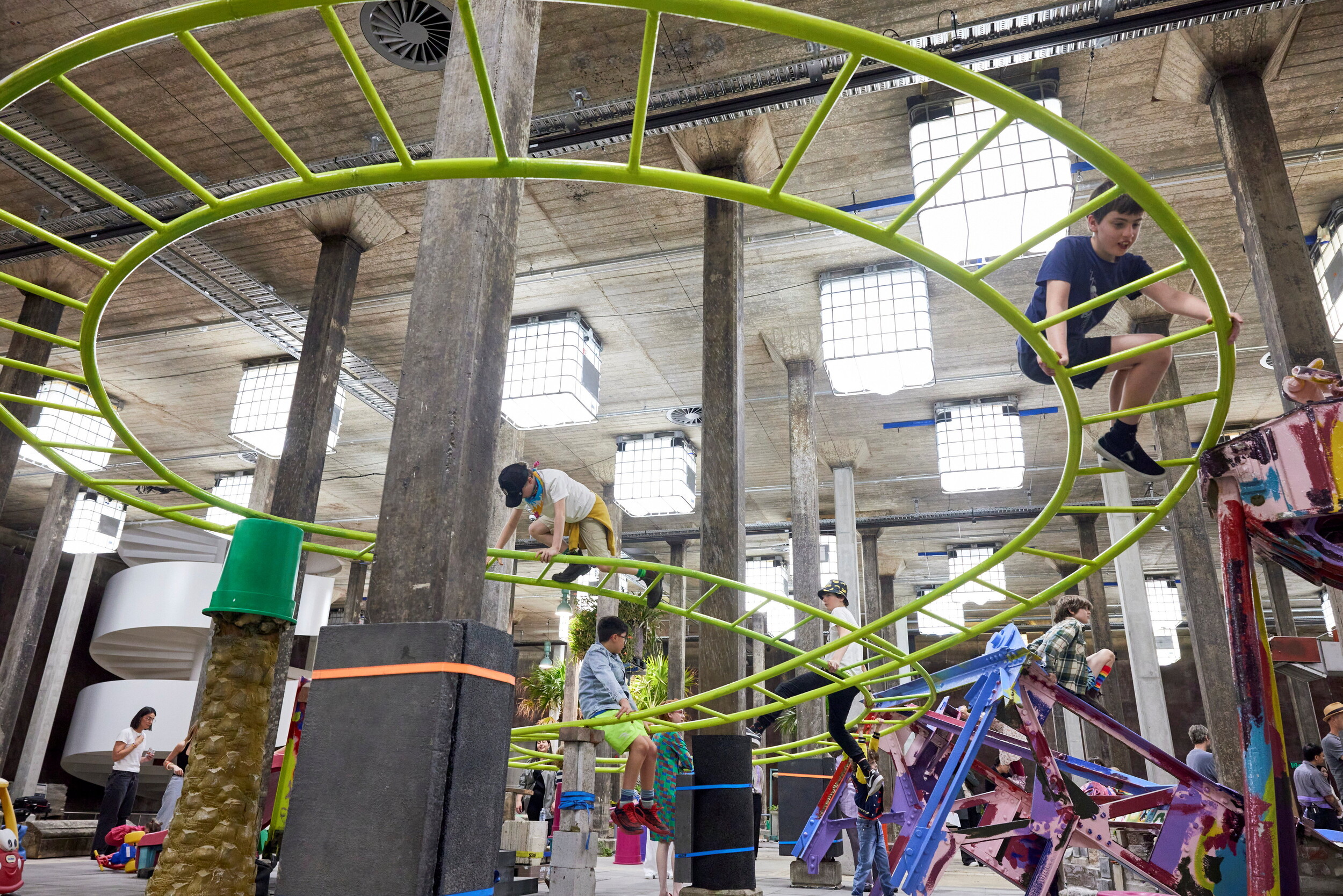Sidney McMahon, Sixty-nine, 2025, installation view. Courtesy of Verge Gallery. Photography by Jessica Maurer.
Sixty-nine
James Jiang
69 is a talismanic number. For the LGBTQ+ community, it evokes the year when popular protests against the New City police raids of the Stonewall Inn helped ignite the movement for gay liberation. For numerologists, the figures suggests balance, reciprocity, or cyclicality, a visual approximation of the yin-yang symbol. For a lot of people, it references a sex position. The connotations of all three are at play in Sidney McMahon’s Sixty-nine, an exhibition described by the artist as “an immersive sculptural exploration of the symbolic and emotional terrain of the number 69 as a cycle of life, death, queerness, and intimacy.”
This evocative, if slightly free-floating, theme keys us into a drama of indeterminacy and reversibility that gets played out spatially, temporally, and materially. If “work once finished is like a tombstone” (to borrow the title of Sarah Rodigari’s poem accompanying the exhibit), it is telling that several of the pieces on show revisit prior installations. Exhuming the ghosts of exhibitions past is perhaps one way of intimating that the unfinished business here has to do with not only mourning (Sixty-nine is dedicated to the artist’s late mother), but also a life of (re)making.
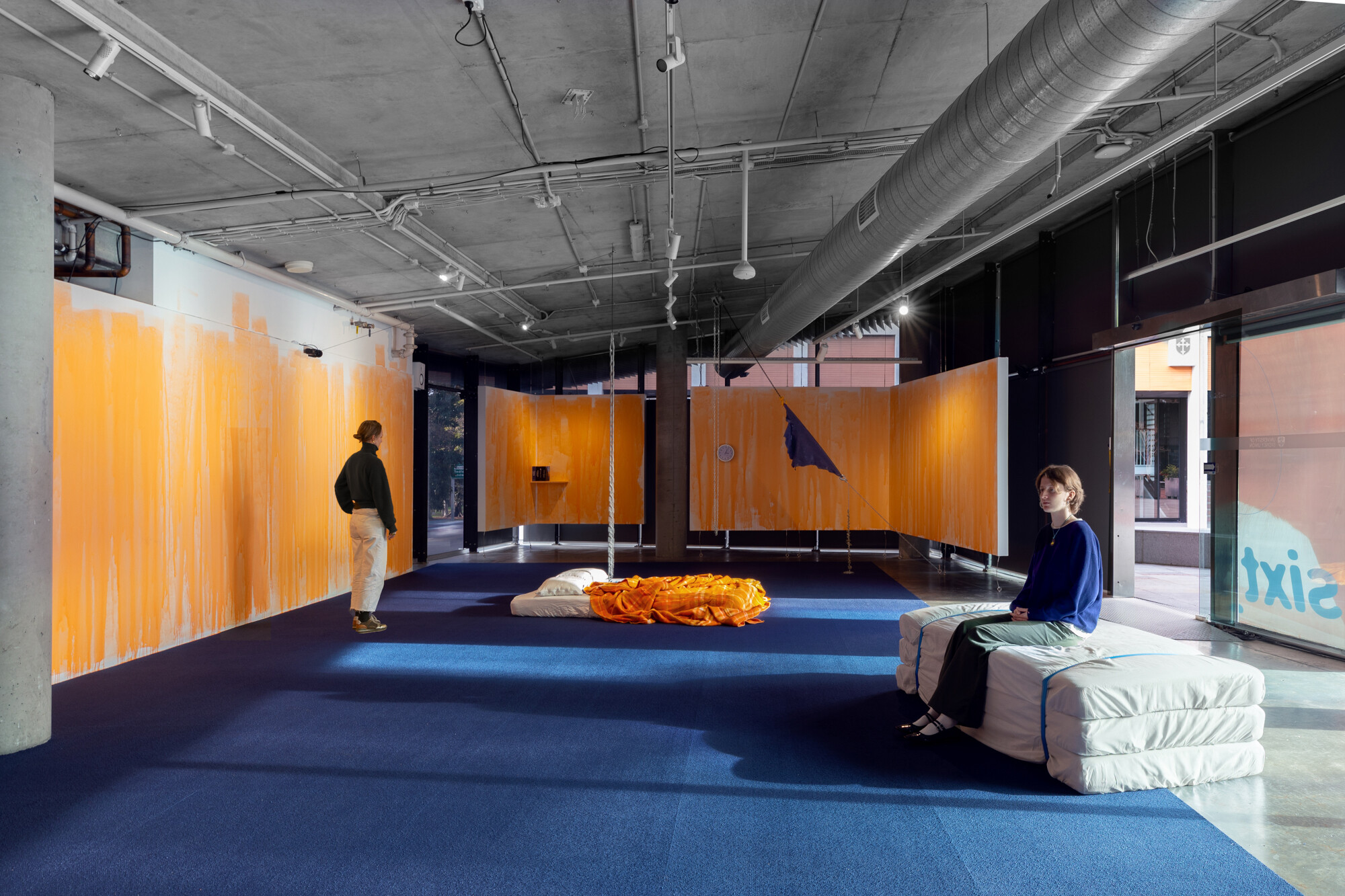
Sidney McMahon, Sixty-nine, 2025, installation view. Courtesy of Verge Gallery. Photography by Jessica Maurer.
At first glance, one might be led to mistake Sixty-nine for a minimalist installation. Eight pieces are scattered sparsely across Verge Gallery’s floor, converging on or around a large ultramarine-blue carpet (blue and orange, like six and nine, form another of the show’s principal complementarities). The ample space between each item toys with the boundary between respectful public distance and domestic propinquity. But the exhibition text offers a corrective to this impression of spareness, its list of materials approaching an epic catalogue: “single-size mattresses, ratchet tie downs, aquarium, crowbar, axe, custom stereo system, MDF, audio (3:04 min, looped), clock safes, three channel video (5 min, looped), queen-size mattress with pen ink, blankets, chain, pulley motor, ropes, assorted objects including pill packets, half-smoked cigarettes…,” and so forth. (I couldn’t help thinking here of the lists in the toilet scene in Alexander Pope’s Rape of the Lock—“Puffs, powders, patches, bibles, billet-doux”—with its mix of creature comforts and eschatological aids.) Despite the dispersal of pieces around the gallery then, it’s an installation densely packed with different materialities, its uncanny ambience the result of a palimpsestic overlay of the disparate worlds evoked by this array.
Some of these worlds have biographical significance. In a 2020 interview about what would become their work Of sorrow and release (2020–21), McMahon opened up about “drawing on materials (that they) have a relationship with from early childhood (…) in rural Queensland.” They remembered “going to neighbouring livestock farms and seeing that (the farmers) would work with animals in a very tender and loving and careful way, but (…) with this ultimate understanding that they were going to leave them at some point.” This farmyard juxtaposition of industry and intimacy, violence and tenderness (eros and thanatos, if we want to get Freudian about it), becomes something of a governing sensibility across the present installation. Immediately to the left of the entrance are three single-size mattresses strapped together with ratchet tie-downs, evoking in their plump flocculence bales of wool. In the far-left corner of the room is a pyramidal speaker stack, also bound together by ratchet tie-downs and hooks, in a Cubist approximation of a woodpile. Walking through Sixty-nine induces this kind of double-vision, as our perspective pivots unexpectedly between the in- and outdoors, work (axes and crowbars) and recreation (a set of books with titles such as Hooked on Fishing and DIY Renovator).
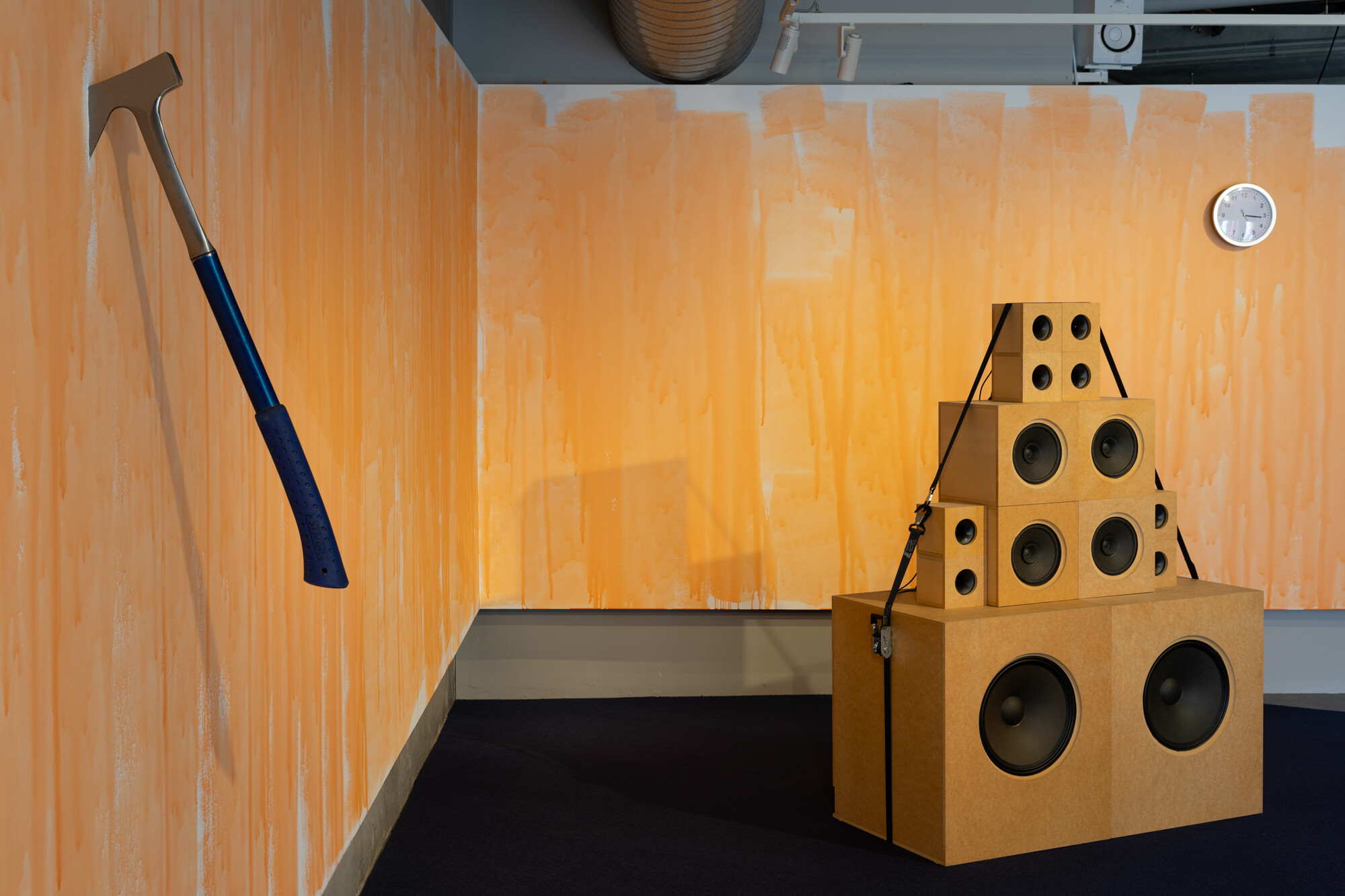
Sidney McMahon, Sixty-nine, 2025, installation view. Courtesy of Verge Gallery. Photography by Jessica Maurer.
The installation’s centrepiece is marked by a few of what we might consider McMahon’s sculptural signatures. Here, a chain, suspended from the ceiling and attached by rope to a pulley motor, periodically tugs at an unmade queen-size bed, a splotch of blue ink marking the point where a hook has pierced the bedsheet. Some clothes and a notebook peek out from under a tussle of woollen blankets, while along the bed’s right side is gathered a messy midden of personal effects, many of them blue in colour (one discernible mini-sculpture comprises a blue incense dish, blue lighter, and packet of Peter Jackson cigarettes over the Wave Books edition of Maggie Nelson’s Bluets). We are at the scene of something—a vigil, perhaps, held for both “a relationship breakdown and a mother dying”, another eros-thanatos conjunction revealed in Rodigari’s poem where “sixty-nine is a double-up.” Like the chain that is its emblem, suspense hangs over these scenarios of loss: when will the bed’s occupant come back, if ever? For how long does the lived-in feeling live on after them? Grief puts one’s sense of time out of joint; three clocks are set up throughout the exhibit, each one about five to ten minutes out of sync with the others. (After filing this review, I got my times mixed up and almost missed an appointment with my analyst. Tempus fugit—or does it?)
It’s worth pausing to compare this piece with McMahon’s Of sorrow and release, where suspended sheets drew attention to a material not listed in Sixty-nine, namely, air. In that earlier work, some well-placed floor fans made the sheets billow out as they were slowly raised to the ceiling, giving the installation a phantasmagoric, almost theatrical, feeling. As Ellen Greig noted of that exhibition, it is “as if the gallery itself (were) breathing in and out,” each inhalation a curtain call to “change and transformation.” This respiratory effect is writ both large and small in Sixty-nine’s centrepiece. Here, the tenting and untenting of the bedsheet as the chain raises and lowers itself, while less dramatic, has an added poignancy—the pull of the horizontal towards the vertical perhaps shadowing the arch of a body in a state of yearning or pain. There is an eerie sensuality about this piece that is aural as much as visual: after a while, the sound of the links as they furl to rest on top of each other, and then unfurl in their ascension, becomes a tinntinnabulum ushering in another dip into despair, another updraft of desire.
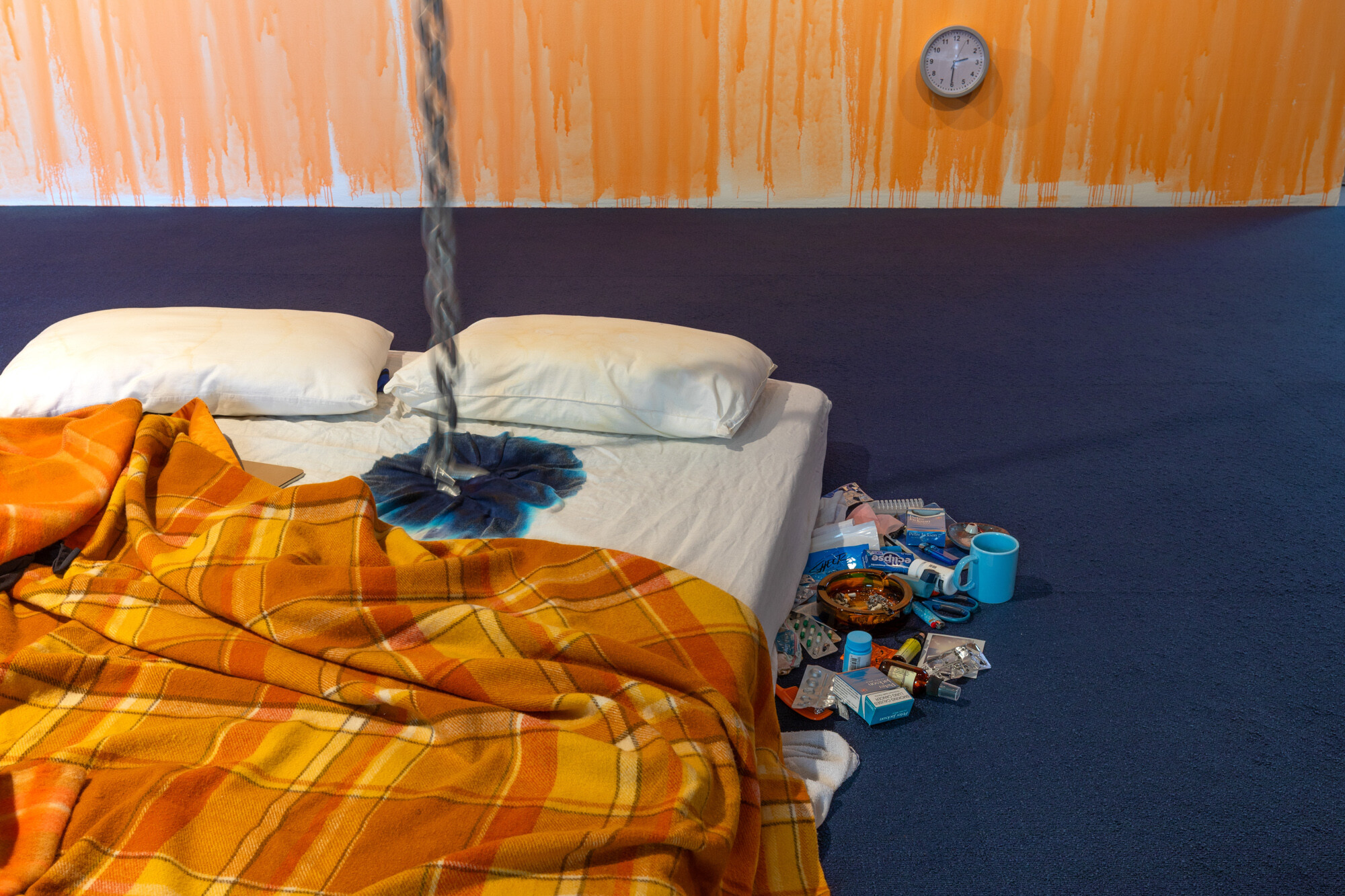
Sidney McMahon, Sixty-nine, 2025, installation view. Courtesy of Verge Gallery. Photography by Jessica Maurer.
Accompanying Sixty-nine’s centrepiece is another sculpture: a piece of leather stretched diagonally from floor to ceiling, with an additional chain, through which some baby’s breath flowers are trellised, running off the lower hook. Gesturing again to McMahon’s past work, these materials offer a reprise of 2019’s Of doubts and dreams, where large leather hides were hung from electric hoists and the same flowers cum chain were displayed. Smaller in scale, the piece in Sixty-nine is striking for its contrast. The flowers would be easy to miss if not for the fallen petals dusting the coiled links on the floor—grace’s footnote to the stretched leather’s poem of force. McMahon’s fabrics often flicker between the fragility of skin and the protectiveness of armour—they are, as Greig noted of McMahon’s 2020–21 show, “both submissive and dominant”. McMahon continues playing with these positionalities in Sixty-nine (with such a title, how could they not), from the physical arrangement of single mattresses (where the dom-sub dyad is interrupted by a third position) to the juxtaposition of leather and flora (where durability is associated with restraint, delicacy with autonomy). In each of these combinations, relations between domming and subbing, topping and bottoming, are subtly queered.
One of the pleasures afforded by this installation is the noticing of correspondences that come to you gradually and in seemingly unbidden fashion. Stay with the exhibit long enough and you’ll sense the rain-drenched suburban scene in the three-channel video (overlaid with the words “our / final / moment”) rhyming with the streaky paint applied thinly to the walls, the orange colour of which hums not just with the Onkaparinga wool blankets on the bed, but the yellowish stains on its pillows. You’ll come alive to the way things collect and pool—the paint along the edges of the walls, the cool inkstain on the sheet, the detritus amassed by the bed, the floral remains littering the floor—each a visual cue or somatic residue reinforcing and being reinforced by the others. You’ll realise how imprecise a metaphor immersion is for this type of experience, which is not so much a submergence in something as a calling forth of something—something like a new awareness of “the reek of the human.”
James Jiang is a writer, editor, and recovering academic. He currently edits the Sydney Review of Books.
